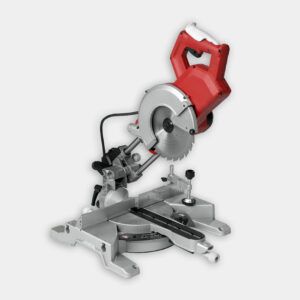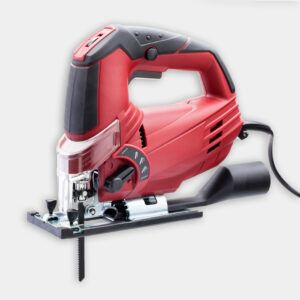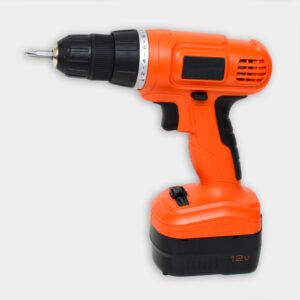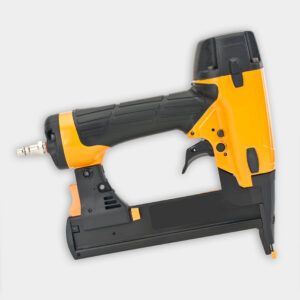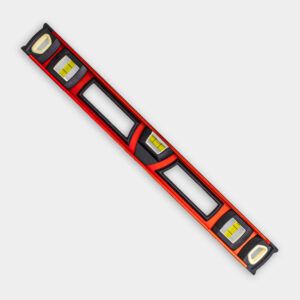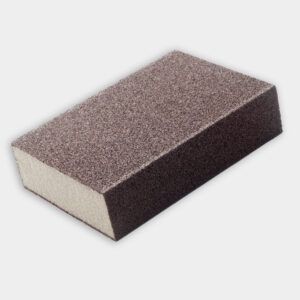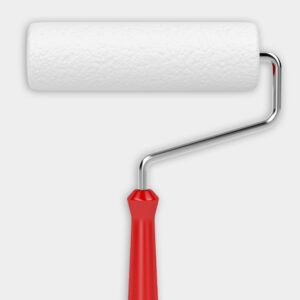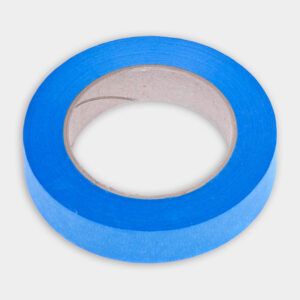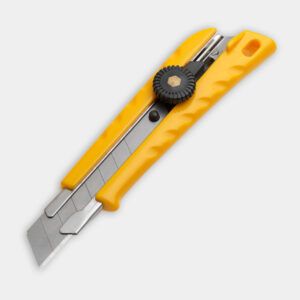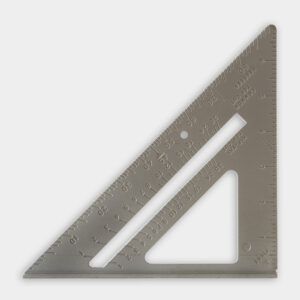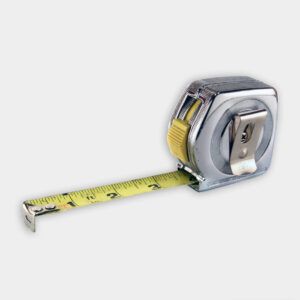We may be compensated if you purchase through links on our website. Our Reviews Team is committed to delivering honest, objective, and independent reviews on home products and services.
With two small children running around, it’s hard for This Old House DIY expert Jenn Largesse to get to the gym—so she created a workout space inside an unfinished storage room in her basement. Watch Largesse turn a small space into a functional and modern home gym in the video above. We’ll walk you through the steps in the guide below.
Choosing the Right Space for Your Gym
Basements and garages are often the go-to locations for setting up a home gym. Concrete floors in these spaces can support heavy gym equipment like treadmills, weight racks, and machines without the risk of damaging the flooring. Additionally, their distance from living rooms and bedrooms helps reduce noise, making it easier to work out without disturbing the household.
However, not every home has a basement or garage suitable for conversion into a gym, or these areas may be needed for other uses. If you’re considering other spaces for a home gym, here are some important factors to keep in mind.
Available Square Footage
The size of your home gym will depend on the type of workouts you plan to do and the equipment you want to include. For example, a simple yoga or stretching area may only require a small corner of a room, while a weightlifting or cardio setup will demand much more space.
As a rule of thumb, make sure to leave enough room around each piece of equipment to move safely and perform exercises without feeling cramped. Consider how much space you’ll need for your favorite activities, and evaluate potential locations in your home based on their dimensions. Bedrooms, attics, or even underutilized dining rooms can often be repurposed into functional gym spaces.
Ceiling Height
Ceiling height is a crucial yet often overlooked factor when setting up a home gym. If you plan to incorporate activities like jumping, overhead lifts, or using taller equipment such as pull-up bars or cable machines, you’ll need a space with adequate vertical clearance.
Standard ceiling heights in bedrooms and living rooms may feel too low for certain exercises, particularly if you’re tall or using tall equipment. Ideally, aim for at least 8 to 9 feet of ceiling clearance to ensure you can work out comfortably and safely. If space is tight, consider limiting equipment that requires vertical movement, or look for more compact, foldable options.
Flooring Type
The type of flooring in your chosen gym area plays a critical role in protecting both your equipment and your home. Hard surfaces like concrete, tile, or hardwood may not provide enough cushioning and can be prone to damage from dropped weights or vigorous activity. Consider installing gym-specific flooring such as rubber mats, foam tiles, or interlocking gym flooring over the existing surface. These materials can absorb shock, reduce noise, and protect your home from equipment damage.
If you’re converting a space with carpeting, be aware that thick carpet may not provide stable footing for certain activities or equipment, and it could trap moisture from sweat.
Ventilation and Temperature Control
Proper ventilation and temperature control are essential for comfort and safety in your home gym. Spaces like basements and garages often lack sufficient airflow, making them uncomfortable during long workouts, particularly in summer. Consider adding a fan or portable air conditioner to improve airflow and maintain a comfortable temperature.
If your space has windows, make use of natural ventilation by opening them during workouts. For cold climates, portable heaters or insulation may be needed to ensure that the space remains warm enough in winter months. Proper ventilation also helps prevent moisture buildup, which can lead to mold or mildew, especially in basements.
Proximity to Living Areas
Another factor to consider is how close your gym is to the main living areas of your home. While it’s convenient to have a home gym nearby, placing it too close to bedrooms or living spaces can lead to noise and vibration disturbances during workouts.
If possible, select a location that minimizes disruptions to the rest of the household. This is particularly important for high-impact exercises, weightlifting, or equipment like treadmills that generate significant noise. Soundproofing measures such as rubber gym flooring, heavy curtains, or acoustic panels can help reduce noise transfer to adjoining rooms.
Planning Your Home Gym
Before you start any construction, plan which equipment and fixtures you want to add. Assess your space carefully so you can determine what you can fit.
- Measure the available space
- Determine the types of exercises you want to perform
- List the equipment you need
- Create a floor plan that maximizes space efficiency
- Ensure adequate clearance for movement and safety
Leave enough room for stretching and bodyweight exercises, which don’t require equipment but need floor space.
Equipment Selection
The equipment you choose will depend on your fitness goals and available space. Here are some essential pieces to consider:
- Cardio equipment (treadmill, stationary bike, or rowing machine)
- Weight training equipment (dumbbells, kettlebells, or a multi-gym system)
- Resistance bands
- Yoga mat
- Foam roller
- Jump rope
Start with the basics and add more equipment as needed. It’s better to have a few versatile pieces than to overcrowd your space with rarely used equipment. In smaller home gyms, space can be limited. You may want to go for space-saving equipment such as foldable treadmills, adjustable dumbbells, or wall-mounted racks for weights or bands.
Lighting
Good lighting is crucial for safety and motivation in your home gym. In addition to overhead lighting, consider task lighting for specific workout areas, dimmable lights for activities like yoga, and natural light sources, if possible. In the video above, Largesse creatively uses LED strip lighting behind a wooden board for an indirect lighting option.
Flooring
Home gym flooring must be durable, easy to clean, and provide cushioning for impact exercises. Here are some popular options:
- Rubber tiles or mats
- Foam tiles
- Vinyl planks
- Cork flooring
Largesse opted for recycled rubber floor tiles from U.S. Rubber, which are eco-friendly, provide excellent durability, and are easy to install.
Wall Treatments
While not necessary, wall treatments can enhance unfinished spaces, making your gym feel like a gym rather than a utility closet. Here are a few of the most popular:
- Paint: A fresh coat of paint can dramatically change the look of your gym. Choose light colors to make the space feel larger and brighter.
- Mirrors: Installing mirrors can make your gym feel more spacious and allow you to check your form during workouts. Largesse uses mirrored sliding doors to conceal storage while serving this purpose.
- Accent walls: Largesse uses laminate wood flooring planks to create a warm, textured accent wall that contrasts nicely with surrounding surfaces.
Tools You’ll Need
This project requires a variety of carpentry and flooring tools.
Building a Home Gym: Step-by-Step
Creating a home gym is an excellent way to maintain your fitness routine without the hassle of commuting to a public gym. Below, we describe how Jenn Largesse built her home gym.
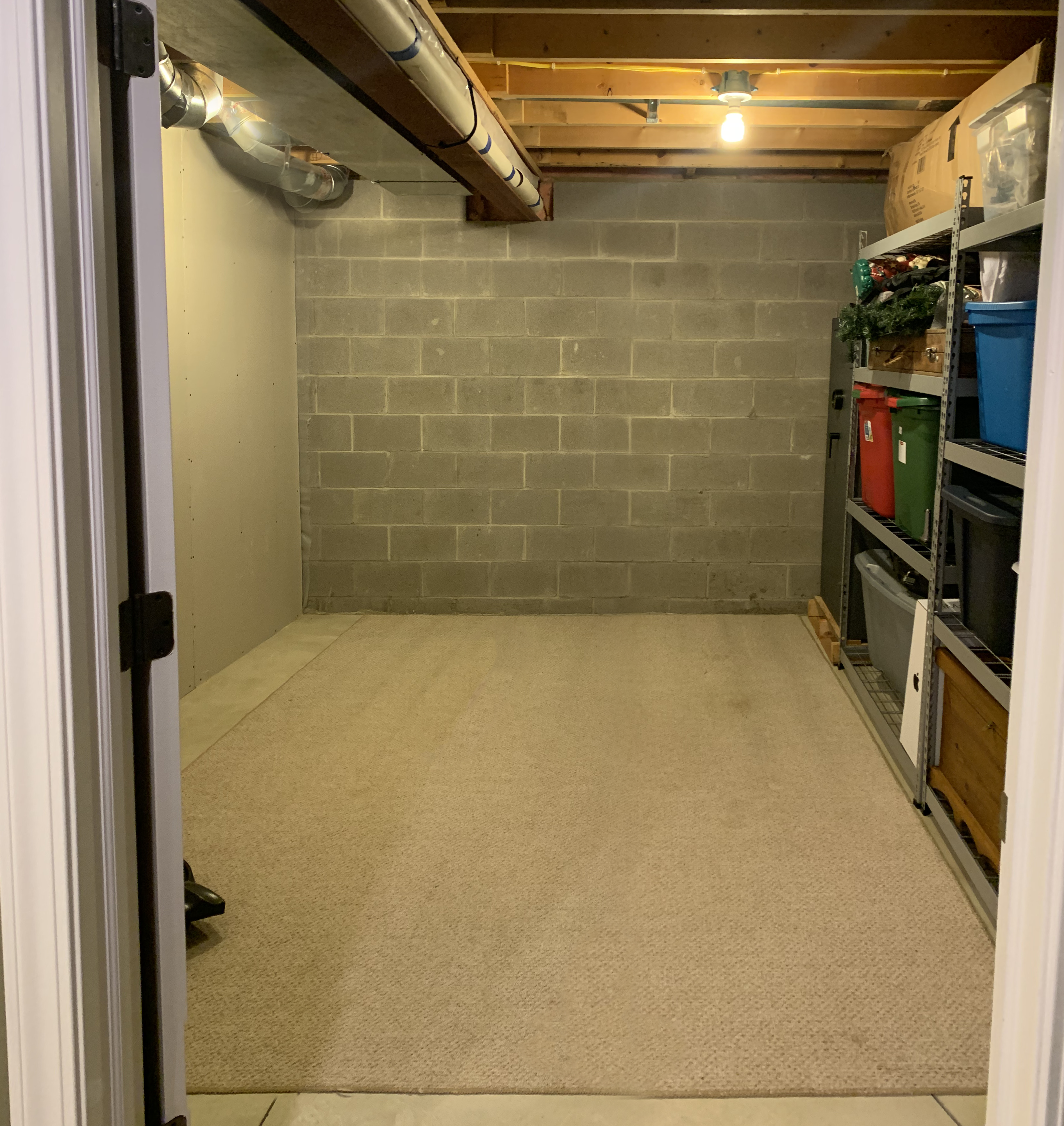
Materials
- Rubber floor tiles (Eco-lock floor tiles by U.S. Rubber)
- Laminate wood flooring
- Mirror closet doors
- Masking gel for mirror
- LED light strips
- Cinderblock wall waterproofing paint
Step 1. Enclose a Storage Space with Closet Doors
Frame a wall with 2×4’s with an opening wide enough for two sets of bypass doors. Without a center divider, the doors can open to the sides. Elevate the opening to accommodate the baseboard for a more built-in look.
Secure the framing to the floor, exterior wall, interior wall, and joists above. Frame the opening with 1×2’s and install the track and the doors.
After installing basic closet doors as described above, Largesse was unhappy with their final appearance. She decided to frame and paint them for a more finished look. To do it yourself:
- Use a 1×8 board to replace the valance and tacked nails in the door frame. Trace the shape and then cut it using a jigsaw.
- Glue and nail a 1/4-inch-thick piece of trim to finish the cut edge and drill pocket holes in the backside of the ends and along the top edge for installation.
- Coat the new valence in your desired paint.
Painting the trim around mirrors can be tricky because the painted edge is reflected in the mirror, highlighting imperfections. Tape off the main part of the mirror and then use a gel masking film along the edges. This gel is applied in one thick coat.
Step 2. Waterproof a Cinderblock Wall
Largesse used a waterproofing sealer on her cinderblock wall. Apply the sealer with a high nap roller to seal the surface and smooth out the rough texture. This sealer goes on thick, and Largesse used a whole gallon for one small wall.
Step 3. Install the Laminate Plank Flooring Wood Wall
For the final main wall of her room, Largesse decided to add some warmth with wood tones since she wasn’t planning to use wood on the floor. She used click-together planks that could be glued and nailed to the wall.
- Mark wall studs and start placing planks at the floor. Use construction adhesive to secure the planks and pin nails to face nail them to the studs without creating visible holes.
- This type of flooring material is more difficult to install on a vertical surface. Largesse advices tacking the end of the first board in place, get the joints right between the ends of the boards, and then tap DOWN to lock them in place.
- If there are outlet covers, marked the plug using a jigsaw to notch out the plug’s opening, and glue every few rows to lock everything in place.
- Cut out the drywall between the studs on the final wall section if you want to make space for inset shelves.
- To install the baseboard, use adhesive and nails. Cut the pieces but leave the closet doors uninstalled until you lay the floor tiles. Used a piece of your chosen flooring as a spacer to raise the baseboards off the floor.
- Use wood filler to cover seams before sanding everything smooth and touching up the paint in place.
- Position the wall shelves in the opening, secure them to the studs on either side and then trim around their edges for an inset look.
Step 4. DIY Indirect LED Lighting
With the main parts of the room complete, finish the look with some lighting.
Create your own indirect LED lighting by sticking a strip of lighting to the back of a board and then iattaching it on the wall with a block at the top and bottom to hold it away from the wall. Add additional lighting fixtures as necessary.
Step 5. Install Rubber Floor Tiles
For her flooring, Largesse reached out to a company called U.S. Rubber. They make a rubber floor tile that’s 94% recycled rubber that mainly comes from truck tires that might otherwise end up in a landfill. Their products come in a ton of color combinations, and you can also pick the size of the color chip, create a custom color, and even choose the thickness.
Largesse specifically chose their Eco-lock tile in all black for a sleek look, and because it comes with removable border edges, she didn’t have to cut the tabs off all the perimeter tiles, saving a ton of time. To install this type of rubber floor tile:
- Start at the corner of the room and work your way out. If you’re working in a larger space, start in the center of the room and work your way outward.
- The tiles have tabs that nest tightly together. Largesse finds it easiest to bend in the corners of the tab and tuck them together. “I tried a rubber mallet, but the tuck method worked better for me.”
- When you reach the wall, cut the tiles to size using a straight edge and a utility knife. Score the tile several times with the blade and separate the parts.
- Once finished laying all the tiles, install the final piece of baseboard below the mirrors.
Step 6. Bring in Equipment
Place your equipment in your new space. Consider adding a TV near the open area for guided floor workouts.
